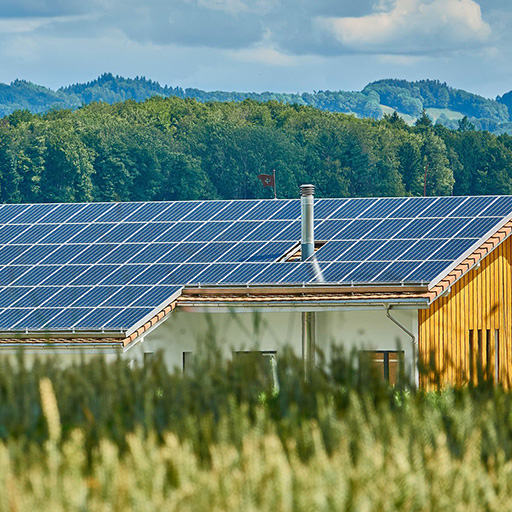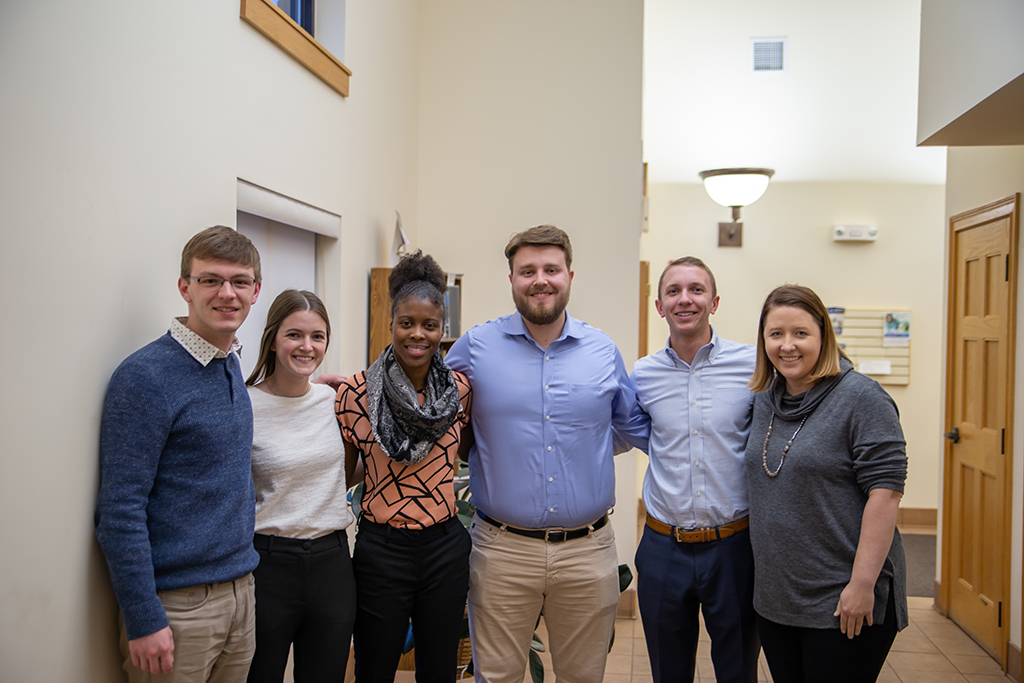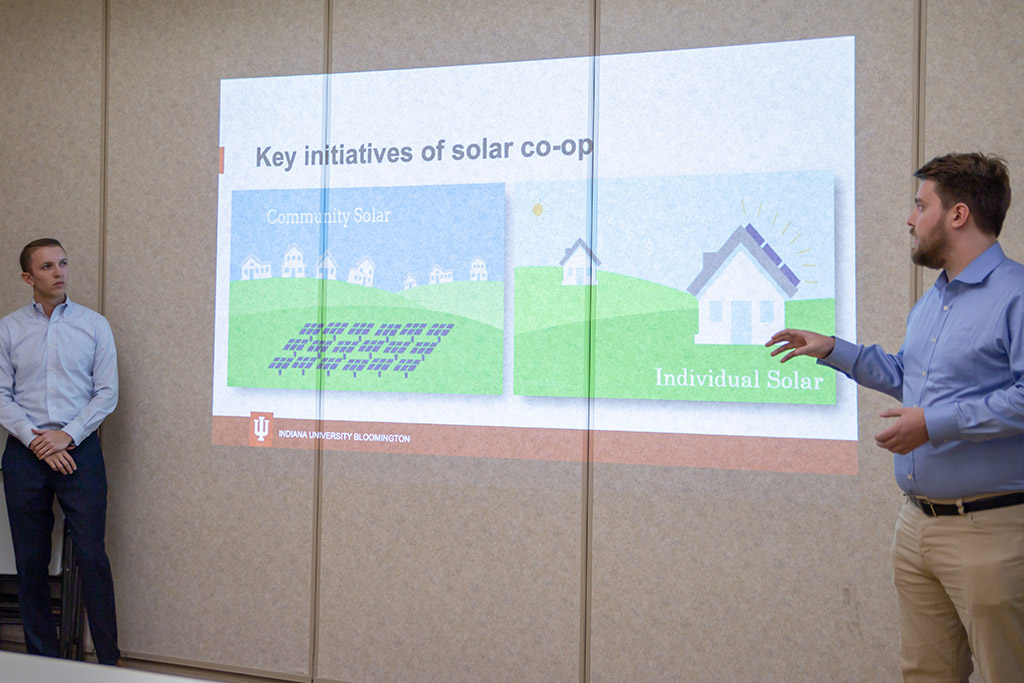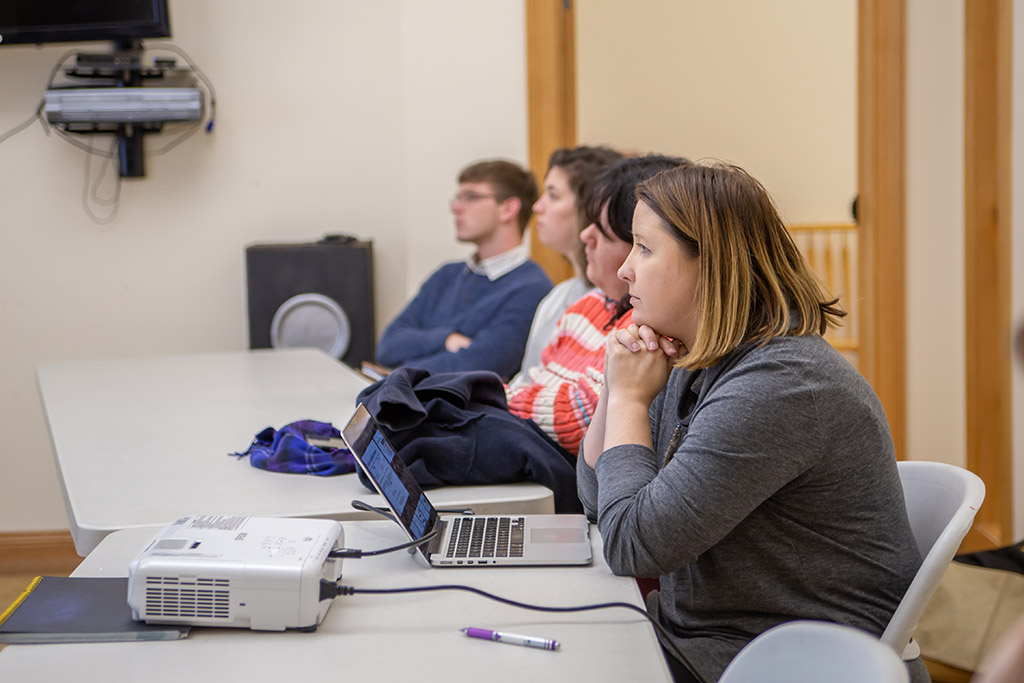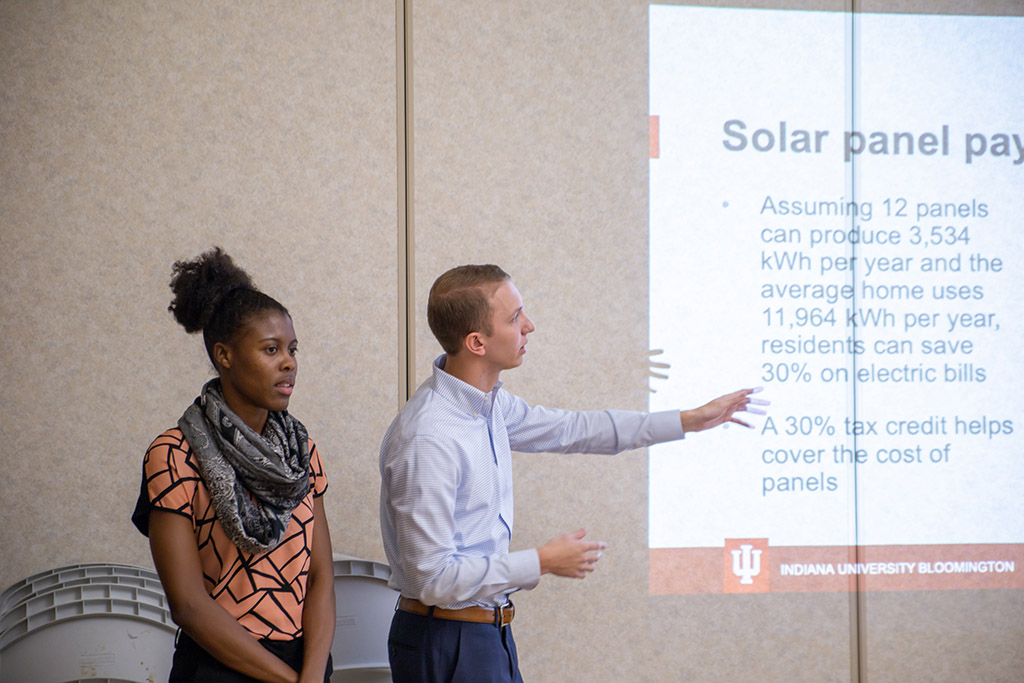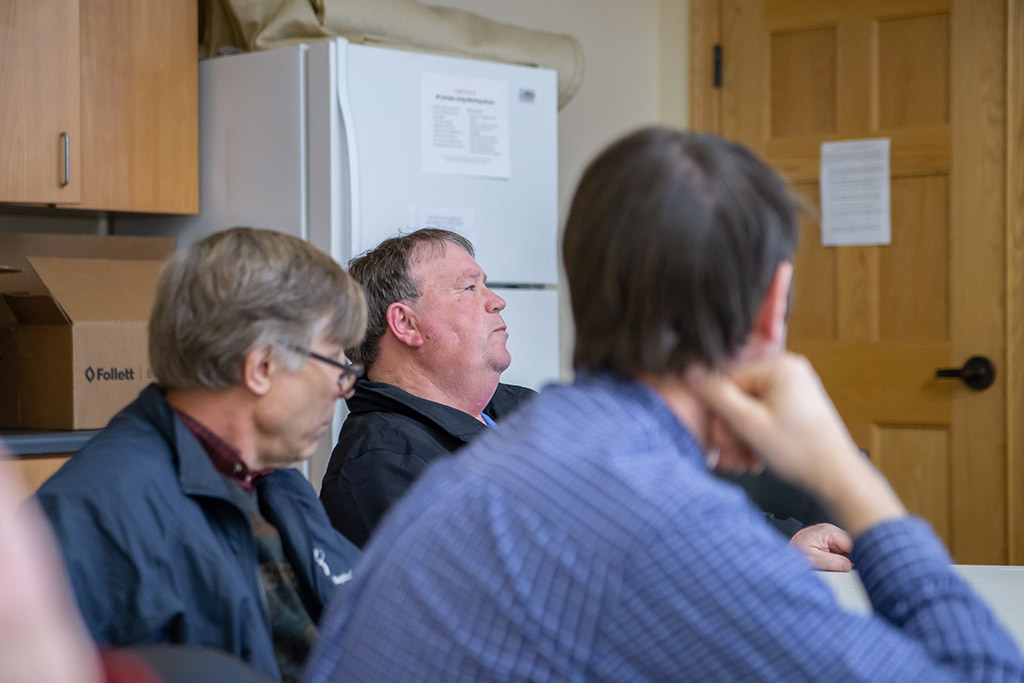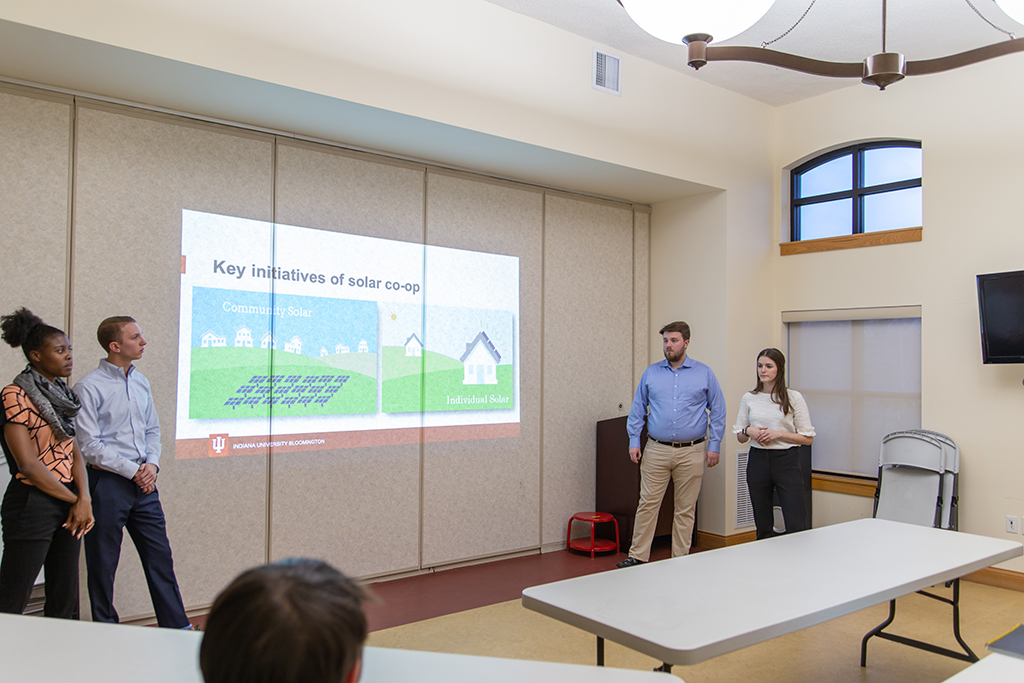PAOLI, Ind. — Four representatives from clinical assistant professor Bree Josefy’s graduate field consulting class stood before an audience of Paoli residents to present the Orange County Solar Initiative on December 5 at the public library.
The discussion, a culmination of a semester-long partnership between the Kelley School of Business and the IU Center for Rural Engagement’s Sustaining Hoosier Communities (SHC) program, stressed the rewards of investing in solar energy by joining a local solar co-op.
From the Lost River Market and Deli in Paoli to a community recycling center, green cooperatives in Orange County have a promising track record. And the success of these recent co-ops—or organizations that return their profits back into a shared financial pool—has indicated to the IU team that this small county could stand to benefit from a solar co-op.
Once home to herds of buffalo, Orange County still displays its rural roots today. Encompassed by the Hoosier National Forest and the site of various Amish settlements, the county currently has a population around 19,400, putting it 74th out of 94 Indiana counties in that regard. It also ranks 84th for median household income, at $10,876 below average for the state of Indiana, according to the U.S. Census Bureau.
While Orange County is less populated and less affluent than other Indiana counties, SHC community partner Samuel Kinsey believed a solar co-op could bring residents together and help them save on their energy bills.
Following Kinsey’s recommendation, the IU consulting team developed the blueprint for an Orange County solar co-op using feedback from Paoli residents, which they gleaned from visits in October and November.


